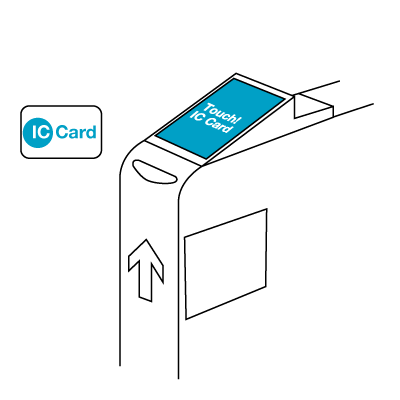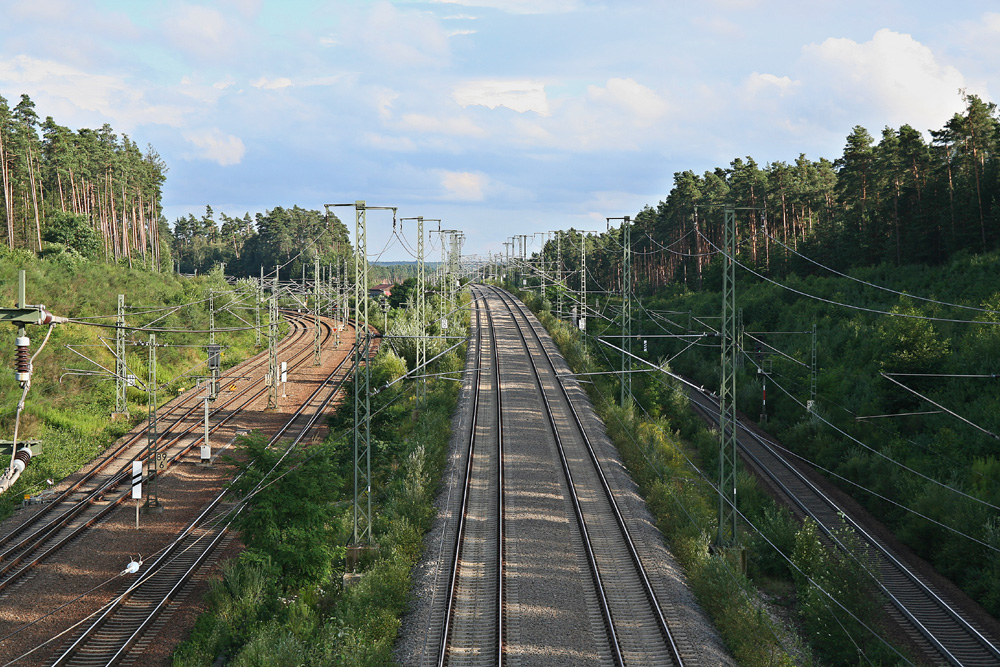|
Kō Station (Aichi)
is a junction railway station in the city of Toyokawa, Aichi, Japan, operated by Meitetsu. Lines Kō Station is a station on the Meitetsu Nagoya Line and is 9.6 kilometers from the terminus of the line at . It is also a terminal station for the Meitetsu Toyokawa Line and is 7.2 kilometers from the opposing terminus of the line at . Station layout The station has three island platforms connected to the station building by a footbridge. The station has automated ticket machines, Manaca automated turnstiles and is staffed. Platforms Adjacent stations Station history Kō Station was opened on 1 April 1926 as a station on the Aichi Electric Railway's Toyohashi Line connecting Toyohashi with . On 1 April 1935, the Aichi Electric Railway merged with the Nagoya Railroad (the forerunner of present-day Meitetsu). A spur line to Toyokawa was opened on 18 February 1945. In December 1987, the station platforms were extended to be able to accommodate trains of ... [...More Info...] [...Related Items...] OR: [Wikipedia] [Google] [Baidu] |
Manaca
Manaca, written in lower-case letters, is a rechargeable contactless smart card used in Nagoya, Japan and the surrounding area since February 11, 2011, when it replaced the Tranpass magnetic fare card system. As of March 23, 2013, it became compatible with 9 other IC cards, allowing it to be used nationwide. Etymology The name comes from the Japanese word , meaning "center", because Nagoya is roughly in the center of Japan, and because it claims to be a central part of your lifestyle. The name, even in Japanese, is written in Roman letters as "manaca", usually with a lowercase "m". Usage Manaca has a feature set similar to other prepaid IC Cards used across the country. It provides a convenient method of payment for train and bus fares while also being accepted as payment at some shops, restaurants, and vending machines. Manaca cards can be purchased from ticket machines located in subway, city bus and Meitetsu bus and train stations, and are available in both registered ... [...More Info...] [...Related Items...] OR: [Wikipedia] [Google] [Baidu] |
Railway Stations In Aichi Prefecture
Rail transport (also known as train transport) is a means of transport that transfers passengers and goods on wheeled vehicles running on rails, which are incorporated in Track (rail transport), tracks. In contrast to road transport, where the vehicles run on a prepared flat surface, rail vehicles (rolling stock) are directionally guided by the tracks on which they run. Tracks usually consist of steel rails, installed on Railroad tie, sleepers (ties) set in track ballast, ballast, on which the rolling stock, usually fitted with metal wheels, moves. Other variations are also possible, such as "slab track", in which the rails are fastened to a concrete foundation resting on a prepared subsurface. Rolling stock in a rail transport system generally encounters lower friction, frictional resistance than rubber-tyred road vehicles, so passenger and freight cars (carriages and wagons) can be coupled into longer trains. The rail transport operations, operation is carried out by a ... [...More Info...] [...Related Items...] OR: [Wikipedia] [Google] [Baidu] |
Railway Stations In Japan Opened In 1926
Rail transport (also known as train transport) is a means of transport that transfers passengers and goods on wheeled vehicles running on rails, which are incorporated in tracks. In contrast to road transport, where the vehicles run on a prepared flat surface, rail vehicles (rolling stock) are directionally guided by the tracks on which they run. Tracks usually consist of steel rails, installed on sleepers (ties) set in ballast, on which the rolling stock, usually fitted with metal wheels, moves. Other variations are also possible, such as "slab track", in which the rails are fastened to a concrete foundation resting on a prepared subsurface. Rolling stock in a rail transport system generally encounters lower frictional resistance than rubber-tyred road vehicles, so passenger and freight cars (carriages and wagons) can be coupled into longer trains. The operation is carried out by a railway company, providing transport between train stations or freight customer faciliti ... [...More Info...] [...Related Items...] OR: [Wikipedia] [Google] [Baidu] |
Spur Line
A branch line is a phrase used in railway terminology to denote a secondary railway line which branches off a more important through route, usually a main line. A very short branch line may be called a spur line. Industrial spur An industrial spur is a type of secondary track used by railroads to allow customers at a location to load and unload railcars without interfering with other railroad operations. Industrial spurs can vary greatly in length and railcar capacity depending on the requirements of the customer the spur is serving. In heavily industrialized areas, it is not uncommon for one industrial spur to have multiple sidings to several different customers. Typically, spurs are serviced by local trains responsible for collecting small numbers of railcars and delivering them to a larger yard, where these railcars are sorted and dispatched in larger trains with other cars destined to similar locations. Because industrial spurs generally have less capacity and traff ... [...More Info...] [...Related Items...] OR: [Wikipedia] [Google] [Baidu] |
Shin-Unuma Station
is a railway station located in the city of Kakamigahara, Gifu Prefecture, Japan, operated by the private railway operator Meitetsu. This station and JR Central Unuma Station are connected with a passageway. Lines Shin-Unuma Station is a terminal station on the Kakamigahara Line, and is located 17.6 kilometers from the opposing terminus of the line at . It is also a station on the Inuyama Line, and is located 25.8 kilometers from the terminus of the line at . The station also offers express service to Chubu Centrair International Airport, using Meitetsu 2000 series trains on the Meitetsu μSky service. Station layout Shin-Unuma Station has two island platforms and one side platform connected by a footbridge. The station is staffed. Platforms Adjacent stations , - !colspan=5, Nagoya Railroad History Shin-Unuma Station opened on 1 October 1926. Surrounding area *Kiso River *Unuma Station See also * List of Railway Stations in Japan The links below contain all ... [...More Info...] [...Related Items...] OR: [Wikipedia] [Google] [Baidu] |
Meitetsu-Nagoya Station
is the principal station of the Nagoya Railroad (Meitetsu) system in Nagoya, Japan. Most trains of Meitetsu's major lines operate through this station. The station is also a gateway to the Chūbu Centrair International Airport, which is connected with the station by the Rapid Express service started on January 29, 2005. This station is built under the Meitetsu Department Store, therefore the station area is very narrow for the large number of passengers, but it is technically difficult to enlarge the station due to the limited and complicated underground area. Therefore, at this station, passengers' waiting spots are separated by destination. Passengers are required to wait at their spot to go. The station is adjacent to JR Central's Nagoya Station, the city's central station, and Kintetsu Nagoya Station, the terminal of the Kintetsu Nagoya Line. Ticket Gates There are 7 ticket gates at Meitetsu Nagoya Station, including the Central Ticket Gate, West Ticket Gate, S ... [...More Info...] [...Related Items...] OR: [Wikipedia] [Google] [Baidu] |
Higashi-Okazaki Station
200px, Platforms 200px, Track Layout is a railway station in the city of Okazaki, Aichi, Japan, operated by Meitetsu. Lines Higashi Okazaki Station is served by the Meitetsu Nagoya Main Line and is 29.8 kilometers from the terminus of the line at Toyohashi Station. Station layout The station has two elevated island platforms connected by a footbridge. The station has automated ticket machines, Manaca automated turnstiles and is staffed. Platforms Adjacent stations Station history Higashi Okazaki Station was opened on 8 August 1923 as a station on the privately held Aichi Electric Railway. The Aichi Electric Railway was acquired by the Meitetsu Group on 1 August 1935. Passenger statistics In fiscal 2017, the station was used by an average of 39,675 passengers daily. Surrounding area * Okazaki City Hall * Okazaki Castle See also * List of Railway Stations in Japan The links below contain all of the 8579 railway stations in Japan. External links {{Portal b ... [...More Info...] [...Related Items...] OR: [Wikipedia] [Google] [Baidu] |
Turnstile
A turnstile (also called a turnpike, gateline, baffle gate, automated gate, turn gate in some regions) is a form of gate which allows one person to pass at a time. A turnstile can be configured to enforce one-way human traffic. In addition, a turnstile can restrict passage only to people who insert a coin, ticket, pass, or other method of payment. Modern turnstiles incorporate biometrics, including retina scanning, fingerprints, and other individual human characteristics which can be scanned. Thus a turnstile can be used in the case of paid access (sometimes called a faregate or ticket barrier when used for this purpose), for example to access public transport, a pay toilet, or to restrict access to authorized people, for example in the lobby of an office building. History Turnstiles were originally used, like other forms of stile, to allow human beings to pass while keeping sheep or other livestock penned in. The use of turnstiles in most modern applications has been cr ... [...More Info...] [...Related Items...] OR: [Wikipedia] [Google] [Baidu] |
Ticket Machine
A ticket machine, also known as a ticket vending machine (TVM), is a vending machine that produces paper or electronic tickets, or recharges a stored-value card or smart card or the user's mobile wallet, typically on a smartphone. For instance, ticket machines dispense train tickets at railway stations, transit tickets at metro stations and tram tickets at some tram stops and in some trams. Token machines may dispense the ticket in the form of a token which has the same function as a paper or electronic ticket. The typical transaction consists of a user using the display interface to select the type and quantity of tickets and then choosing a payment method of either cash, credit/ debit card or smartcard. The ticket(s) are then printed on paper and dispensed to the user, or loaded onto the user's smartcard or smartphone. Ticket and fare formats For most of the twentieth century, ticket machines issued paper tickets, or tokens worth one fare each. Later, fare value ... [...More Info...] [...Related Items...] OR: [Wikipedia] [Google] [Baidu] |
Meitetsu Logomark 2
, referred to as , is a private railway company operating around Aichi Prefecture and Gifu Prefecture of Japan. Some of the more famous trains operated by Meitetsu include the '' Panorama Car'' and the '' Panorama Car Super'', both of which offer views through their wide front windows. While the ''Panorama Super'' train is used extensively for the railroad's limited express service, the older and more energy-consuming ''Panorama Car'' train has been retired, the last run being on 27 December 2008. In the Tōkai region around Nagoya, it is a central firm of the Meitetsu Group, which is involved in the transportation industry, the retail trade, the service industry, and the real estate industry, etc. Meiji Mura is the corporate museum of Meitetsu. As of March 31, 2010, Meitetsu operated of track, 275 stations, and 1,090 train cars. Lines Major stations Major stations in Nagoya *NH36 : Meitetsu Nagoya Station *NH34 : Kanayama Station *NH33 : Jingū-mae Station ... [...More Info...] [...Related Items...] OR: [Wikipedia] [Google] [Baidu] |








